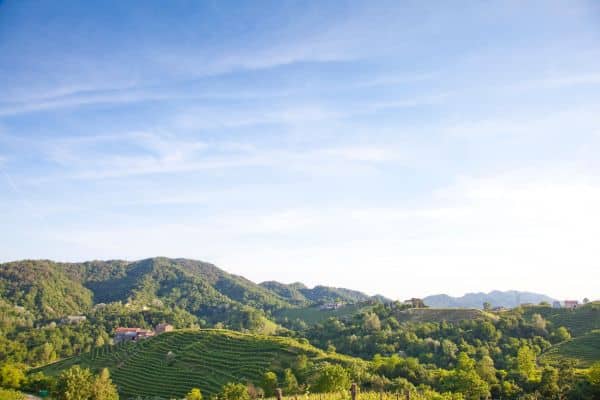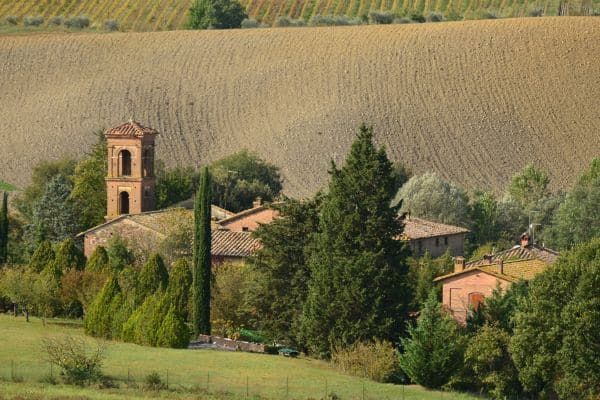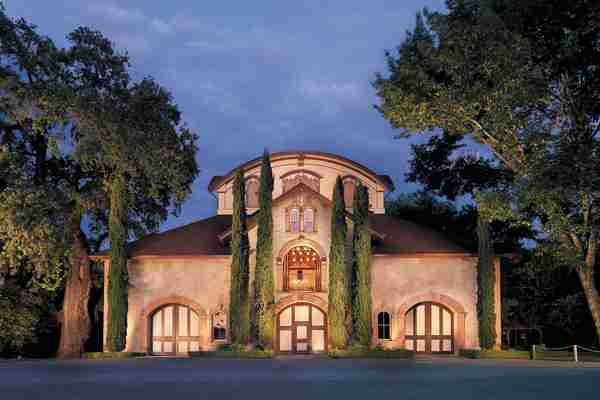Ancient Vineyards of Italy: A Journey Through Time
If you read this blog regularly, you’ll know how obsessed I’ve become with Italian wines. There are just so many interesting grapes and regions to choose between—and even more rich history to explore.
My journey through Italian wines took an amazing turn recently when I heard about ancient Italian wines. And no, I don’t mean dusty old bottles of vinegar found in a long-forgotten cellar. I mean the renaissance of ancient viticultural techniques and the growing interest in ancient Italian wines.
As the thoughts of these historic wines flowed through my mind, it made me think of the grapes, vineyards, and people who preserved and adapted these traditions from ancient times to the modern day.
So buckle up and journey with me back through the millennials and find out all about ancient Italian wines.
The Origins of Italian Winemaking

Wine was first produced in the Caucuses around 6000 BC. A millennium later, it became common in what is now Iran and Syria. Historians used to think that the Greeks brought wine to Italy. However, recent studies have changed that thinking.
The wonderful book Italy in a Wine Glass by Marc Millon contains a fascinating story. Around 8000 BC, the Greeks arrived in Southern Italy and Sicily. They encountered a land rich in vines, which they called Oenotria, meaning “the land of vines.”
Coupled with the discovery of large terracotta storage jars found in underground caves under Monte Kronio, Agrigento, historians believe that strategic wine production in Italy dates back to at least the Bronze Age.
The Historic Regions of Italian Winemaking

OK, so you’ve got a handle on the origins of Italian winemaking. But what regions did this viticulture start in? Do they still make wine today? Your girl has brought the receipts, as usual.
Tuscany: The Etruscans started making wine in Tuscany about 3000 years ago. It’s hilly and warm, which is part of the secret behind its cherished Chianti and Brunello di Montalcino and reputation for some of the best food in Italy.
Some say the region hit its peak in the 70s when producers blended local grapes with Bordeaux varieties like Cabernet Sauvignon and Merlot. I say it’s still right up there.
Sicily: The archaeological discoveries on Monte Kronio suggest that Sicily was making wine in 4000 BC. The region boasts active vineyards that have been in continual operation since the 15th Century. There is something very distinctive about a glass of vino from Sicily; whether it’s a crisp white or full-bodied red is what gets you going.
Piedmont: It’s not all about the sun. Sometimes, you need a little Alpine magic, which Piedmont has in droves. Cool temperatures and one-of-a-kind soil are what make Barolo and Barbaresco reds so revered in the modern market. What I find fascinating about the region is that Celtic-Ligurian people have been producing wine there since pre-Roman times.
Venetto: Venetto is another region that thrived during the Roman Times. These days, it’s celebrated for its Valpolicella, Amarone, and, of course, Prosecco.
Campania: Last but not least is the Neopolitian wonder of Campania. The Greeks produced wines here in 8 BC, but these days, its native grapes are wowing the world.
The Evolution of Italian Winemaking Techniques

Wine has been a significant and integral part of Italian culture for thousands of years. As you might expect, wine production has mirrored the historical context and innovation seen through these periods.
Early Italian viticulture started with the Etruscans. The process was straightforward; grapes were crushed by foot and fermented in large earthenware jars. When the Greeks arrived on Italian shores, new grape varieties were added to what was largely a natural process.
With the rise of the Roman Empire, the production of wine scaled up. New tools and better vineyard management processes emerged, raising standards. However, it wasn’t until the Medieval Era that wine presses emerged. Monasteries were responsible for fine-tuning techniques and even adding honey and spices as preservatives.
However, perhaps the most critical era involved the Renaissance. Wealthy families invested in vineyards, and experimentation flourished. Aging barrels became more commonplace as the more scientifically-minded producers developed a greater understanding of concepts like fermentation.
The modern era saw a shift in how Italians thought about wine. Precursors to the DOC and DOCG were established, and innovations like grafting and temperature control during the fermentation process allowed for higher-quality wines that spoke to regional characteristics.
The Cultural Significance of Ancient Vineyards

Since at least the Roman Times, wine has been synonymous with pleasure, sophistication, and culture across Italy. Drinking vino became intertwined with religious rituals, socializing, and even artistic expression.
As vineyards were established, the techniques and methods were based down through generations of family. Just like the vines themselves, this crisscross of regionality and character was represented in the unique character. The Italians are a proud people, and the unique and diverse character of the wine and style of each region is an important part of their identity.
All in all, Italian vineyards and their contribution to economic and cultural life cannot be overstated.
Challenges in Preserving Ancient Vineyards

Ancient vineyards, just like cultural traditions, are difficult to maintain. Thankfully, there are dedicated custodians who preserve and adapt regional grapes to keep the fire burning. However, it’s not an easy job.
Some of the biggest challenges facing these historic regions include environmental instability caused by manmade climate change. If temperatures continue to increase, many ancient wine regions will slip out of the Goldilocks zone and perhaps into absurdity.
Of course, it’s not just the weather that’s a threat. Some of Italy’s top regions have indigenous grapes that don’t grow elsewhere. This diversity is under threat due to economic pressures, as low-yield grapes are moved aside for more commercially viable vines.
So, let’s get the word out about these ancient wines.









